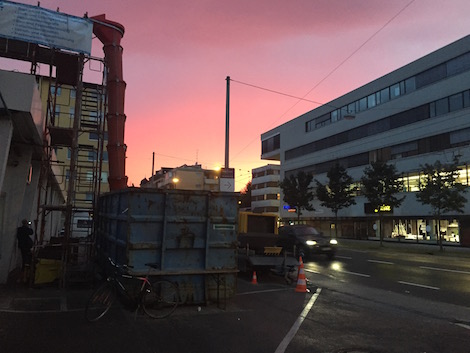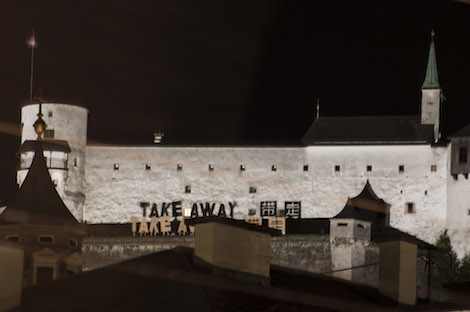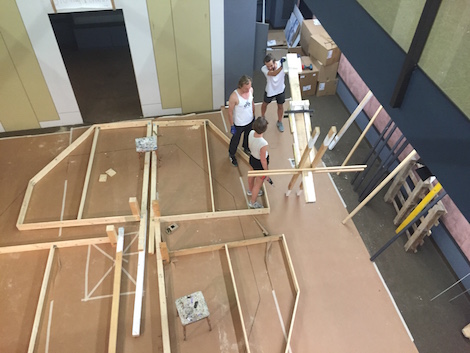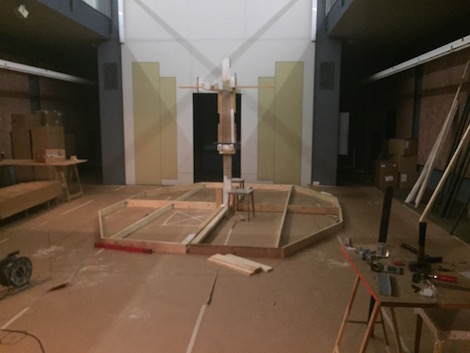| « 14 / 30 Strollology – the alienation from alienation | 12 / 30 Dummies - no thinking without objects » |
13 / 30 Public Routines
Tourism,
human circulation
considered as consumption,
a by-product
of the circulation of commodities,
is fundamentally nothing more
than the leisure
of going to see
what has become banal.
The same modernization
that removed time from the voyage
also removed from it the reality
of space.
(Guy Debord, Society of Spectacle, 1967)
After two and a half weeks in a new town you develop routines. I found my favourite grocery store. I know the less overrun streets in the Altstadt that allow me to avoid the crowds. I can identify the tourist traps among the bars. And most importantly, I know how to avoid the gift shop of the Festungsbahn. All this developed quite naturally. However, when thinking about it, I realize that most of my shortcuts are ways to escape the omnipresent tourism in Salzburg. Although I am visitor, a foreigner myself, every day I am more annoyed by their alienated presence and their alienating infrastructure. And then I am annoyed by my own classist annoyance. If that is what makes them happy, who am I to bother? Thinking that I continue on my shortcuts.

All these thoughts came to me after another visit to Feld72’s public space class. The students are in the final stages of preparation for their public interventions. Many of them explicitly deal with tourism in Salzburg. In their discussions they addressed questions about the politics of tourism in town. Who benefits from investments in the city? Who benefits from a city’s public art? How does an administration design the image of a city? And who is the target group of this image? In short, who is the city made for: inhabitants or visitors? Although these questions sound quite rhetorical their answers are neither simple nor obvious.
“Only 5% of Chinese people have traveled so far. In 2014, 17.8% more visited the Mozart city. They spend 1.4 days in Austria, 1 hour here, spending on average 989.5EU/day. They come, take photos, they buy and go, leaving behind a different Salzburg, irreversibly changing the public space.”
Constanta Dohotaru from Romania is preparing a project she calls Takeaway. She has built two-meter high letters that she will use to project the word ‘takeaway’ onto the Festung Hohensalzburg at night. She is convinced that Salzburgers are avoiding the Altstadt. “With all its tourists’ places they don’t own it anymore. This new fake city is a perfect baroque décor for this ephemeral presences.” Her installation will be visible from most of the city. It does not question tourism per se, but the protocols and routines in which tourism works in Salzburg.

Another group of students tackle this phenomenon, too. They are in the process of building a 1:1 replica of the fountain at Kajetanerplatz. They idea is to place it upside down next to the original fountain and occupy it as a space to disrupt the fairy-tale façade of the plaza. While observing their preparations, Michael Obrist from feld72 tells me about the challenges to work in public.
“I am always looking forward to productive misunderstandings. I think that is what public space is about. When you exhibit in a museum your audience is always a small exclusive clique of insiders. In a public space at first your audience doesn’t know that they are your audience. And the people that you would usually interact with make only 10% of a public space. So misunderstandings are part of the game. And yet, public space has its rules. Public space is about compromise, art is not. That is our challenge.”
We continue to talk about the complicity of artists in the process of turning an inner city into a museum. Interestingly, this is something all of the students are very much aware of. This is one of the reasons why they choose temporally limited interventions. A processual art is hard to appropriate and even harder to turn into a product or service. Isn't that right, Mr Debord?



